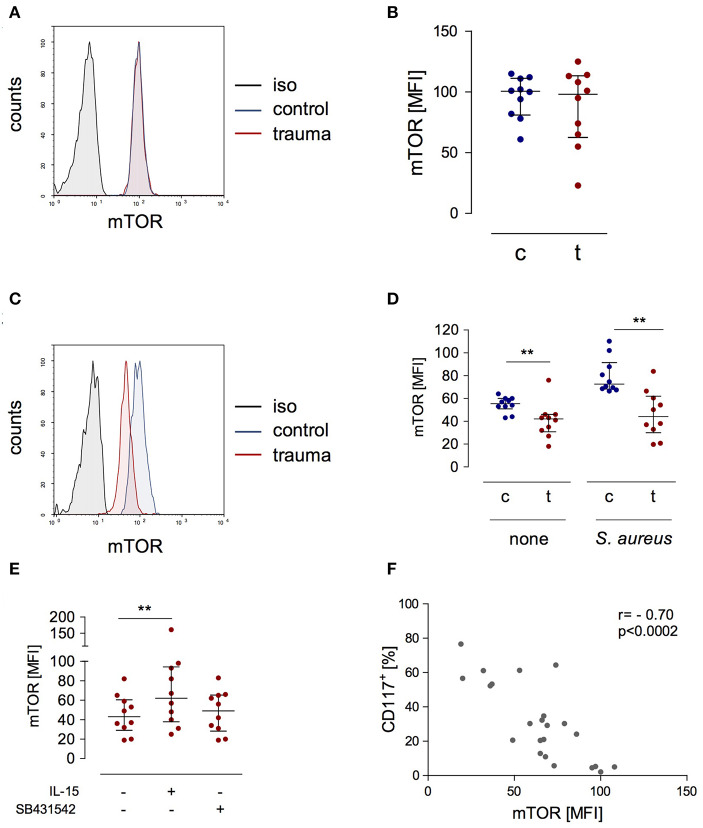Figure 5.
The expression of phosphorylated mTOR is reduced in stimulated CD56bright NK cells after trauma and inversely correlates with the expression of CD117. (A) Representative histograms of phosphorylated mTOR expression in CD56bright NK cells from control subjects (c) and trauma patients (t) ex vivo. (B) Cumulative data of phosphorylated mTOR expression ex vivo (n = 10). (C,D) PBMC were stimulated with S. aureus and intracellular expression of phosphorylated mTOR was determined after 18 h. Representative histograms after stimulation with S. aureus (C) and cumulative data (n = 10) of phosphorylated mTOR (D) are shown. (E) Recombinant IL-15 or SB431542 was added during stimulation of PBMC from trauma patients (n = 10) with S. aureus [the values for cells stimulated with S. aureus alone are also shown in (D)]. Horizontal lines indicate the median/interquartile range. Statistical differences between control and trauma (B,D) were tested using the Mann-Whitney U-test, differences between different culture conditions (E) were tested using the Wilcoxon signed rank test. (F) Spearman correlation between expression of CD117 and phosphorylated mTOR after stimulation with S. aureus. **p < 0.01. iso, isotype control.

